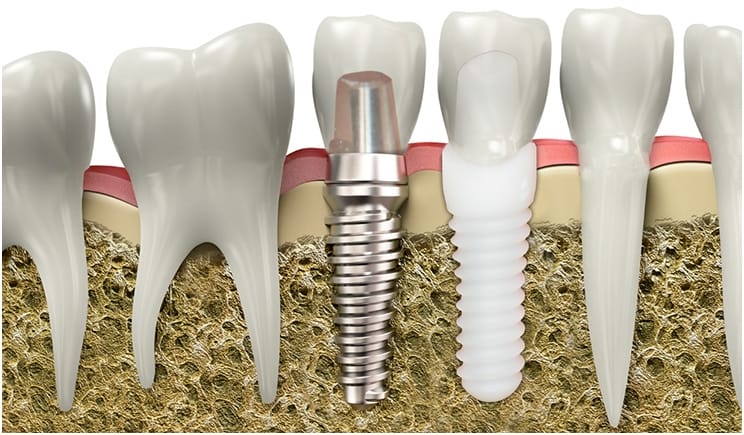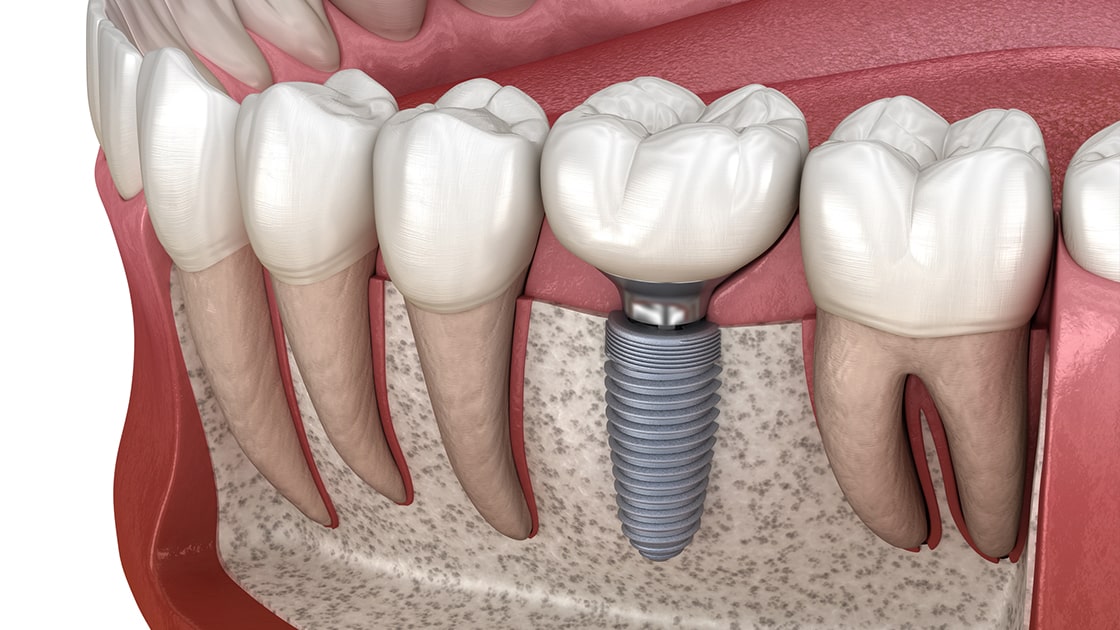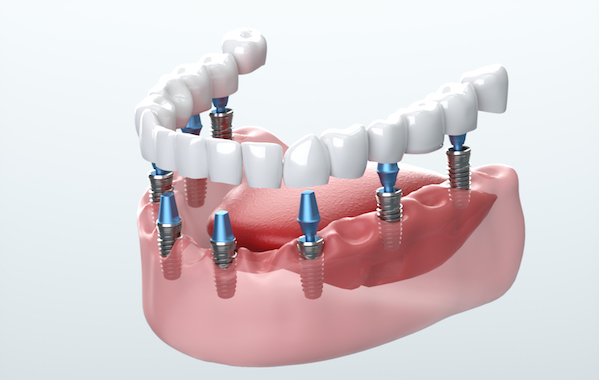Dental Implants Whole Mouth Grand Rapids MI - Dental Implants: What You Should Know
Dental Implants Whole Mouth Grand Rapids MI - Dental Implants: What You Should Know
Blog Article
Dental Implants And Dentures Grand Rapids MI - Full Mouth Dental Implants
The journey towards dental implants begins with a thorough evaluation of the jawbone's condition. When there might be inadequate bone density to help an implant, bone grafting turns into an important process to recreate a stable basis. Understanding Our site how much bone grafting is needed for dental implants tremendously influences the remedy plan, timeline, and total success explanation rate.
The amount of bone grafting required is dependent upon multiple components, including the extent of bone loss, the implant's measurement, and the particular location inside the mouth. In circumstances of significant bone loss because of periodontal ailments, trauma, or extended tooth loss, more in depth grafting may be necessary. Conversely, if the bone loss is minimal, a smaller graft might suffice.
Dental Implant Dentures Holland MI - How Much Do Dental Implants Cost? (2024)
The evaluation process typically entails imaging research corresponding to X-rays or 3D scans, allowing the dental professional to visualize the bone structure (Dental Implants Near Me Holland MI). These images assist in figuring out the quality and quantity of existing bone. If the bone is deemed inadequate, the dentist will then outline the appropriate grafting procedures
Grafting may be sourced from numerous areas. Autografts, which involve harvesting bone from the affected person's own physique, are often deemed the gold standard. These provide wonderful integration with the existing bone however come with the downside of further surgery. Other choices embrace allografts, which use donor bone, and synthetic supplies designed to mimic natural bone. Each possibility has its own implications on therapeutic and success rates.
After figuring out the necessary quantity of bone grafting, the dental professional will create a tailor-made plan for the patient. This plan might include the timing of bone grafting in relation to the implant placement. In some instances, a graft can be carried out concurrently with the implant surgery. Alternatively, in more sophisticated scenarios, a separate therapeutic period is indicated.
Healing timelines differ primarily based on the individual's health, the extent of grafting, and the sort of graft used. Generally, the healing of a bone graft takes several months before an implant could be positioned. During this time, bone regeneration occurs, resulting in a steady base for the implant.
Dental Implant And Bridges Grand Rapids MI - Dental Implants - an overview
Patients typically marvel concerning the risks associated with bone grafting. While complications such as infection or graft failure are possible, these occasions are comparatively uncommon. Adhering to post-operative care instructions and attending follow-up appointments minimize risks and promote therapeutic.
Once the bone has adequately healed, the dentist assesses the graft's success by evaluating the bone density and stability. If every little thing seems favorable, the subsequent steps toward placing the dental implant can start. The success of this subsequent step largely hinges on the standard of the bone graft and its integration with the encompassing bone.
Cost concerns play an necessary function within the decision-making course of. The expense of bone grafting varies primarily based on supplies used, the complexity of the case, and geographic location. It is important for patients to discuss finances upfront to avoid unexpected payments later within the remedy.
Dental Implants Walker MI - Learn More About Your Implants Treatment
Also, patients ought to have realistic expectations concerning the timeline and outcomes. Many elements can affect how much bone grafting is needed and its total effectiveness. A collaborative approach involving the patient and the dental group not only ensures readability but in addition enhances the chances of a profitable outcome.

Maintaining good oral hygiene and regular dental visits following the procedure is vital. These practices can prevent issues and ensure that both the graft and the implant remain steady over time. The ongoing relationship with a dental professional is essential, particularly within the months following the procedures.
In conclusion, understanding how much bone grafting is needed for dental implants encompasses a multi-faceted strategy that considers bone quality, grafting varieties, therapeutic time, and overall patient health. The balance between attaining the specified aesthetic and functional outcomes whereas minimizing risks and complications is on the heart of dental implant procedures. The journey could additionally be intensive, but a well-planned strategy maximizes the chances for a successful, long-lasting lead to restorative dental work.
- Determining the amount of bone grafting required for dental implants typically hinges on the preliminary bone density and volume of the affected person's jawbone.
- Each patient's case is unique; factors similar to previous extractions, periodontal disease, or trauma can influence the necessity for grafting.
- A 3D imaging scan is often conducted to assess the exact dimensions of the available bone and inform the grafting strategy.
- The sort of dental implant placement—immediate or delayed—may dictate the quantity of bone grafting necessary for stability and integration.
- Different kinds of graft materials, such as autografts, allografts, or artificial choices, can impression how much grafting material is needed.
- Assessing the affected person's total health, age, and way of life habits can have an effect on the therapeutic course of, influencing graft volume necessities.
- The depth and placement of the implant can necessitate various amounts of graft materials to safe optimal outcomes.
- Successful integration of the dental implant often relies on enough bone density, leading to a tailor-made grafting strategy for each particular person.
- Consultation with an oral surgeon will provide a clearer estimate of the bone grafting wanted primarily based on comprehensive evaluations and imaging outcomes.
- Post-grafting healing time varies; thus, a cautious evaluation is crucial to find out the ultimate quantity of grafting required for profitable implantation.undefinedHow a lot bone grafting is required for dental implants?
Denture Dental Implants Grand Haven MI - Dental Implants services
What is bone grafting and why is it necessary for dental implants?undefinedBone grafting is a surgical process that adds bone or bone-like materials to the jawbone. It is critical for dental implants when the present bone is insufficient to support the implant, guaranteeing stability and long-term success.
How do I know if I need a bone graft for dental implants?undefinedYour dentist or oral surgeon will consider your jawbone through x-rays or 3D imaging to determine its density and quantity. If they discover that you just lack sufficient bone, they may recommend a bone graft before continuing with the dental implant.
Dental Tooth Implant Wyoming MI - How Much Do Dental Implants Cost? (2024)
What elements influence the amount of bone grafting needed?undefinedFactors embody the dimensions and site of the implant website, the health and density of existing bone, and particular person healing capacity (Dental Implant Dentures Grand Haven MI). These parts assist the dentist determine the appropriate amount of graft materials needed
Are there various varieties of bone grafts used for dental implants?undefinedYes, there are a quantity of varieties, together with autografts (from your individual body), allografts (from a donor), xenografts (from animals), and synthetic graft materials. Each type has distinctive advantages and could be chosen primarily based on particular person affected person needs.
Dental Implants And Dentures Muskegon Heights MI - Dental Implants - Missing Teeth - Dentures
How long does the bone grafting process take?undefinedThe period varies based mostly on the complexity of the grafting process and the extent of the area handled. Generally, a bone grafting process can take anywhere from half-hour to a couple hours, depending on the precise circumstances.
What is the recovery time after a bone graft for implants?undefinedRecovery times can differ, however sometimes, preliminary therapeutic may take a couple of weeks, whereas complete integration of the graft with the bone can take a quantity of months. Your dentist will present a personalized timeline based mostly in your state of affairs.

Will I expertise pain after the bone grafting procedure?undefinedSome discomfort is common after a bone graft, but it's typically manageable with prescribed pain medication. Most patients report that pain diminishes considerably inside a quantity of days.
Implants Dental Near Me Grandville MI - Multiple Tooth Dental Implants
How does bone grafting affect the overall dental implant timeline?undefinedBone grafting might extend the overall timeline for receiving dental implants, because it requires a therapeutic period earlier than implants could be positioned. This can add several months to the process however is essential for a successful implant placement.

Are there risks associated with bone grafting for dental implants?undefinedLike any surgical process, bone grafting carries some risks, such as infection, graft failure, or problems related to anesthesia. However, when carried out by an skilled skilled, these risks are generally low.
Can I have dental implants positioned immediately after a bone graft?undefinedIn many instances, dental implants can't be positioned instantly after a bone graft as a outcome of want for the graft to integrate into the present bone. However, some techniques, like instant loading, may permit for this underneath particular conditions. Your supplier will advise you on the most suitable choice primarily based in your circumstances.
Report this page